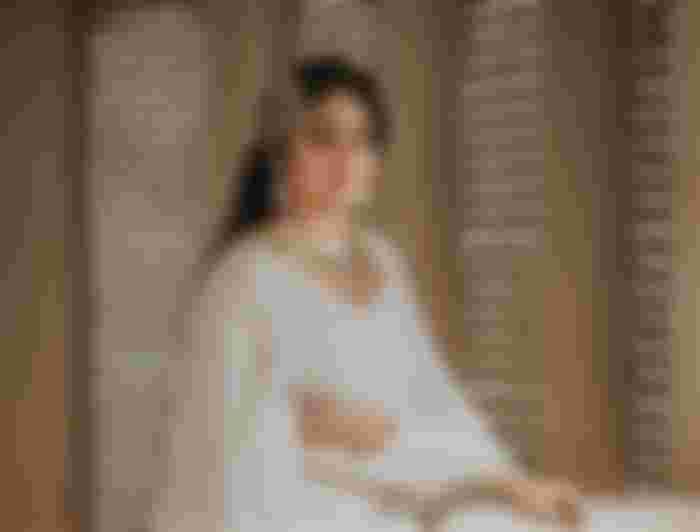
Apparently a French style is a necessary piece of social and social life in the nation. This makes its advancement exceptional since it was regularly in a tight relationship with craftsmanship, governmental issues and other cultural conditions, just as certain authentic minutes, obviously. And right from Louis XIV court style to Christian Dior's post-WWII design upset, its development regularly took fascinating and sudden course, as we're going to see. Know more in insights concerning design on www.trendswe.com
sixteenth seventeenth Century or the Ages of Baroque and Classicisme
During this period, the style becomes to pick up its significance as we probably am aware it today, generally because of the French court which directed the patterns at that point. The most conspicuous style (and chronicled) figure was the one of King Louis XIV since he figured out how to put most of extravagance merchandise creation under the crown's immediate impact. The design press (archetypes of Vogue and Elle that won't be established until 1920 and 1945, individually) was additionally imagined as of now, with an intention was to educate the occupants outside of the court in regards to the most up to date styles and patterns. Louis XIV likewise began the pattern of wearing immense wavy hairpieces and many speculated it was on the grounds that he was gradually getting uncovered; we're uncertain about whether it's reality but rather the truth of the matter is hairpieces stayed well known for the following century or thereabouts.
eighteenth – nineteenth Century or Ages of Rococó, New elegance and Empire Style
This was the period of an excessive style that was essentially compulsory on the court, frequently to the detriment of basic men and this is one of the primary reasons that Marie Antoinette, one of the most celebrated figures from the time, was so detested among the laborers. In any case, she turned into a social symbol of a sort, principally because of her spectacular style that was a sheer portrayal of her riches. We can openly say that she was the nearest to idea of superstars as we probably am aware it today. In any case, the finish of eighteenth century brings a few developments likewise: the powdered hairpieces are losing their prevalence while trim and brocade as materials are not, at this point the most wanted textures in apparel produce. Full-length pants, then again, step to the scene. Characteristic hair likewise recovers its legitimate spot.
Later on, in the nineteenth century, the garments are motivated by Greek and Latin impacts, implying that outfits looked like robes. The cleavages were getting greater and greater while the dresses got so close that women needed to keep their tissues in the little satchels called reticules. By and by, hairpieces re-visitation of design, this time fair, dark, green and blue ones. Then again, greek shoes are extremely popular right now. The utilization of aromas turns out to be incessant while the irregular adornments, for example, feet toe rings and gold circlets can likewise be seen. The unpredictability doesn't stop there, however, as men frequently choose cudgels, colossal bowties, wide pants and thick glasses.
French Fashion in the twentieth Century
France at long last builds up its notoriety for being the style power somewhere close to the ages 1860-1960 when most of high fashion houses are authoritatively established, some of which are currently the most prestigious ones on the planet. The style press is on the ascent and design shows additionally become standard. One of the first established design houses was the one set up by Spaniard Cristobal Balenciaga in 1937. Chanel by Coco Chanel, then again, reignited the universe of French style during the '20s since her plans were invigorating, imaginative and the world immediately held onto them thusly. Then again, Chanel herself was a type of a differentiation to excellence norms that administered at that point yet the world acknowledged her as she might have been. Also, she's still profoundly refreshing for her changed way to deal with style during the post-WWI period.
During the WWII and occupation, there was a deficiency of materials. Various style houses close their entryways and Coco Chanel won't re-visitation of Paris until 1952. Little quantities of new design houses are established during this time, including the one having a place with Nina Ricci. The war forces the requirement for common sense thus the prudent zouzou suit gets acknowledged by youngsters. Ladies, then again, go to caps, which are fundamentally the main adornment that can revive regularly dim, dormant outfits that are shockingly, as per the wartimes. Right now, the cap has fairly holy status – like the one possessed by ranchers and cowgirls since it makes a fundamental aspect of conveyor's character and is essentially a lone design articulation that one is permitted to make. More than frequently, they are made of scraps and other outstanding materials that would somehow or another end up in the rubbish.
Post-war style gets indeed in the spotlight because of Christian Dior's celebrated assortment from 1947 called "New Look" and it comprises of ladylike dresses made of prevalently rich materials, which is somewhat legitimate having at the top of the priority list both the previously mentioned absence of textures and inventiveness that was decreased to a base during the hours of war. The post-war customer base, then again, is obviously okay with something splendid and fabulous, something that will differentiate the trouble of the war and Dior knows about this. Different renowned houses, for example, Balmain and Givenchy additionally open their entryways during this time.
The Second Half of twentieth Century
The French young people of '60s time rejects high fashion and goes to the Great Britain and more easygoing styles. Yves Saint-Laurent is the first who chooses to part ways with high fashion custom and in this way dispatches his first prepared to-wear assortment. He accepts that large scale manufacturing and showcasing are next consistent strides so as to keep and grow the hover of buyers. Holy person Laurent was additionally a pioneer with regards to utilizing non-European social references, non-caucasian models and is known as an innovator of the primary female tuxedo suit.
Post-'60s style is centered around an easygoing, hippy look that totally leaves spectacular and extravagance drifts behind. The new design figures emerge, the most remarkable being Pierre Cardin and Paco Rabanne in the last part of the '60s, joined by Thierry Mugler, Jean-Paul Gaultier, and Christian Lacroix in '80s and '90s. The '90s likewise brought a converge of single brands into enormous extravagance aggregates.
Taking everything into account
Despite the way that Paris these days has numerous contenders from Milan, New York, London and Tokyo, it appears to be that the set of experiences and advancement of French style stay remarkable because of explicit French way of thinking and look on life that created in bearing that comprehends love toward physical excellence and the festival of life in the entirety of its tones. It's difficult to discuss the design of the 21st century at this time, generally on the grounds that the patterns from the past hold returning, which frequently has us with a feeling that everything is permitted. One thing stays valid, however: Having French high fashion manifestations in your closet is as yet a matter of distinction and as such is saved uniquely for those with profound pockets.
